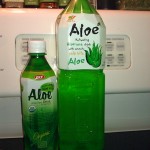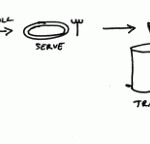Our family here recently got into drinking Aloe Juice. Aloe Juice in itself isn’t that new, but its a recent addition to our pantry. Already knowing its not the best value, we were getting our hit from Trader Joe’s. As a Southern Californian, we really do like TJ’s and they do have good prices on a lot of quality products that would otherwise cost more at other more elite and snobbish places. Alas, most of those “quality products” refer to their produce, milks (cow, almond, coconut), some cheese and definitely wine ($2 chuck!!). But value priced Aloe Juice?? Forget about it!!
Category Archive: Procurement
Sep
09
Why you don’t buy Asian from Whitey
Jul
21
Make vs Buy: dish washing
Between commuting and working at an offsite office, entertaining spouse and kid, home projects, misc errands, bathing, putting the kid to bed, working on potential ventures,…, as well as sleep, the time spent on activities becomes scrutinized. In this case, how much time does all that dish washing take up? Can I “buy” out of at least some of the dish washing? Is it worthwhile to do do?
Oct
19
Warning: FIFO Buffer Underrun!
Grocery stores are full of inefficiencies, but the operators do realize it and try to balance performance with operational expenses. It costs a lot of overhead to have all-lanes-open, and the non-food-value added cost gets added to the price of food items. In a way to improve checkout efficiency, lots of stores employ checkout conveyor belts that allow customers to load the carefully selected items to be checked-out while the attendant is moving items along at the front. This enables the “workload” to be buffered for the checkout attendant (“the processor”). The FIFO buffer approach ensures that the workload is ready for operation when the cashier is able to pull it. If not for the conveyor belt, checkout throughput would be severely limited by the rate at which the customer can directly transfer items up to 2-3 at a time from cart/basket to cashier. See system diagram:


